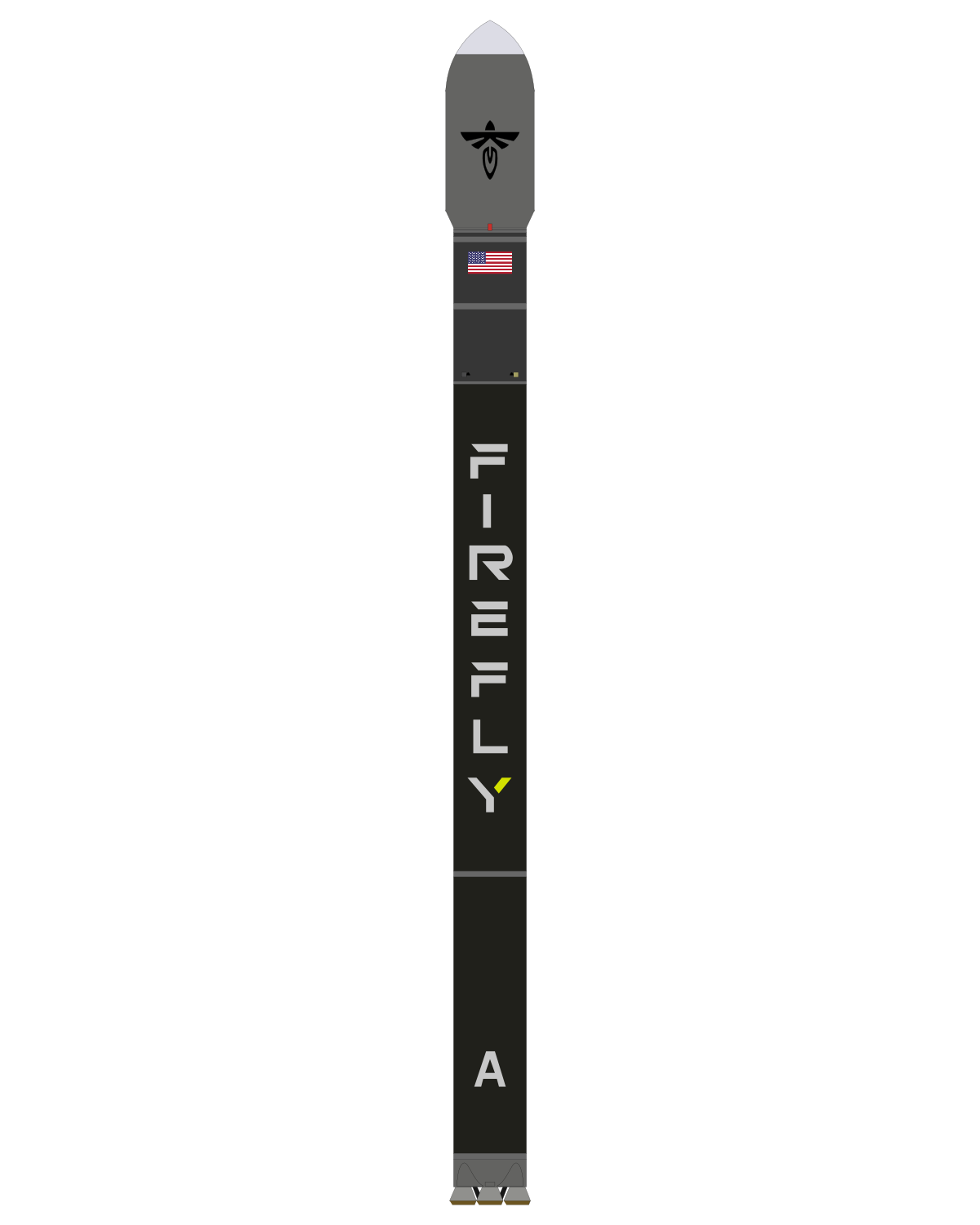
Firefly Alpha is a two-stage orbital expendable launch vehicle developed by the American aerospace company Firefly Aerospace. This rocket was specifically developed to carry small and light commercial satellites into space. The first stage of the Alpha rocket is powered by four Reaver 1 LOX / RP-1 tap-off cycle engines, delivering 736 kN (165,000 lbf) of thrust. The second stage is powered by one Lightning 1 LOX / RP-1 engine, delivering 70.1 kN (15,800 lbf) of thrust with a specific impulse of 322 seconds. The airframe of the rocket uses all carbon-fiber composite material in its construction. Using carbon-fiber makes the rocket more fuel efficient because the use of denser materials like titanium and aluminum would result in a heavier airframe, which would require more fuel to launch. Firefly Aerospace designed the Firefly Alpha rocket to launch a 1,030 kg payload to a 200 km low Earth orbit or a 630 kg payload to a 500 km Sun-synchronous orbit. The first launch of a Firfely Alpha rocket happened on 3 September 2021 from a leased launch pad at the Vandenberg Space Force Base in California. The first fully successful launch of Alpha took place on 15 September 2023. The Firefly Alpha rocket is intended to be a direct American competitor in the small satellite market.
Firefly Alpha
 |
Name: | Firefly Alpha |
| Manufacturer: | Firefly Aerospace | |
| Height: | 18 m / 59 ft | |
| Diameter: | 29 m / 95 ft | |
| Mass: | 54 ton / 119,000 lb | |
| Capacity: |
|
|
| Stages: | 2 | |
| Engines first stage: | 4 x Reaver 1 | |
| Engines second stage: | 1 x Lightning 1 | |
| Cost per launch: | $15 million | |
| Launch sites: |
|
|
| First launch: | 03/09/2021 | |
| Launches: |

Firefly Alpha launch video
Firefly Alpha launch statistics
Images: Firefly Aerospace